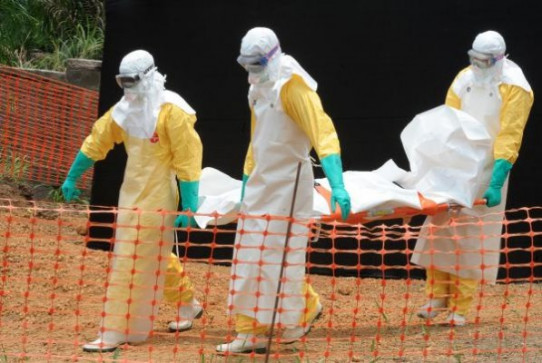
Ebola Outbreak a Regional Threat
The World Health Organization (WHO) is sounding the alarm for coordinated-preventative action on the rapidly evolving outbreak of Ebola in coastal West Africa.
Over the past week, a flight from Guinean capital, Conakry, has been quarantined. Neighboring countries have closed their boarders. France has gone on “high alert”. And investors are fleeing Guinea’s market concerned over what the WHO has called the “most challenging” outbreak of Ebola ever.
Recurring outbreaks of Ebola have been a part of Africa’s history since 1957. As seen in the list below, the occurrence of Ebola outbreaks has been steady. However, prior to the current outbreak, infections have been relatively concentrated to one area, predominately Central African forests.
1976, Congo. 318 infected, 280 dead. 88 percent fatality rate.
1976, Sudan. 284 infected, 151 dead. 53 percent fatality rate.
1979, Sudan. 34 infected, 22 dead. 65 percent fatality rate.
1994, Gabon. 52 infected, 31 dead. 60 percent fatality rate.
1995, Congo. 315 infected, 254 dead. 81 percent fatality rate.
1995, Gabon. 31 infected, 21 dead. 68 percent fatality rate.
1996, Gabon. 60 infected, 45 dead. 76 percent fatality rate.
2000, Uganda. 425 infected, 224 dead. 53 percent fatality rate.
2001-2002, Gabon. 65 infected, 53 dead. 82 percent fatality rate.
2001-2002, Congo Republic. 59 infected, 44 dead. 75 percent fatality rate.
2003, Congo Republic. 143 infected, 128 dead. 90 percent fatality rate.
2003, Congo Republic. 35 infected, 29 dead. 83 percent fatality rate.
2005, Congo Republic. 12 infected, 10 dead. 83 percent fatality rate.
2007, Congo. 264 infected, 187 dead. 71 percent fatality rate.
2007, Uganda. 149 infected, 37 dead. 25 percent fatality rate.
2008, Congo. 32 infected, 14 dead. 44 percent fatality rate.
Historically, Ebola has localized itself within small populations allowing for basic isolating methods such as quarantining people and villages to be effective at addressing its dissemination. The present Ebola outbreak is different though. Rapid spread has been made possible by the increased interactions of people and goods between West African countries. Furthermore, with West Africa being home to dense tropical forests with virus-harboring species the capacity for the virus to spread from animal-to-human and then human-to-human increases the likelihood of outbreak.
Senior Fellow, Laurie Garrett, for Global Health at the Council on Foreign Relations described in a recent piece, ‘Don’t Kiss the Cadaver’, how Ebola spreads:
“The Ebola hemorrhagic disease is terrifying, as the virus punches microscopic holes in the endothelial lining of blood veins, vessels, and capillaries, causing blood to leak from its normal pipelines coursing through the body. Within hours, the punctures enlarge, the leaking turns into a flood, and blood pours into the intestines, bowels, and respiratory channels. As the victims become feverish — raging in pain and hallucinations — their tears drip red with blood. The crimson liquid flows from their noses, ears, bowels, bladders, mouths, while old wounds reopen all over their bodies. The deterioration is swift, transpiring from infection to death typically within five days. And Ebola is spread, via the infected body fluids, to attendant family members, healthcare workers, and funeral preparers.”
The figures of Ebola cases have reached over 100 and at this date 70 deaths have been reported. The initial outbreak emerged in Guinea, and quickly spread to neighboring countries of Liberia and Sierra Leone. But with unconfirmed cases being reported in Mali and Ghana there is concern of what has already been defined as a “regional threat” may unfold into a global one.
Epidemiologists have a difficult time as it is ascertaining the cause of the spread of diseases in a confined area. But what makes this particular case more complex is the diversity of populations both at an ethnic-linguistic level and the varying policies of governing institutions across the region. West Africa has more than 30 different languages and 16 different countries. Not only would the increased proliferation of Ebola in West Africa make any coordinated efforts at an operational and informational level more difficult, but the antagonistic histories that much of these countries share are worthy problems in and of themselves.
It has only been a decade since Sierra Leone, Liberia and the Ivory Coast experienced a civil war. With a lack of resources at their disposal twined with systemic corruption characterizing much of the West African countries, coordinating a robust response across the region appears highly unlikely. It is therefore imperative that intergovernmental cooperation and coordination stream-line information sharing so as to track the outbreak in real-time.







[…] by constructing treatment centers and hospitals, not surprising since it was expected to be a serious regional threat. As the prevalence of infectious diseases (particularly in poor countries which lack infrastructure […]